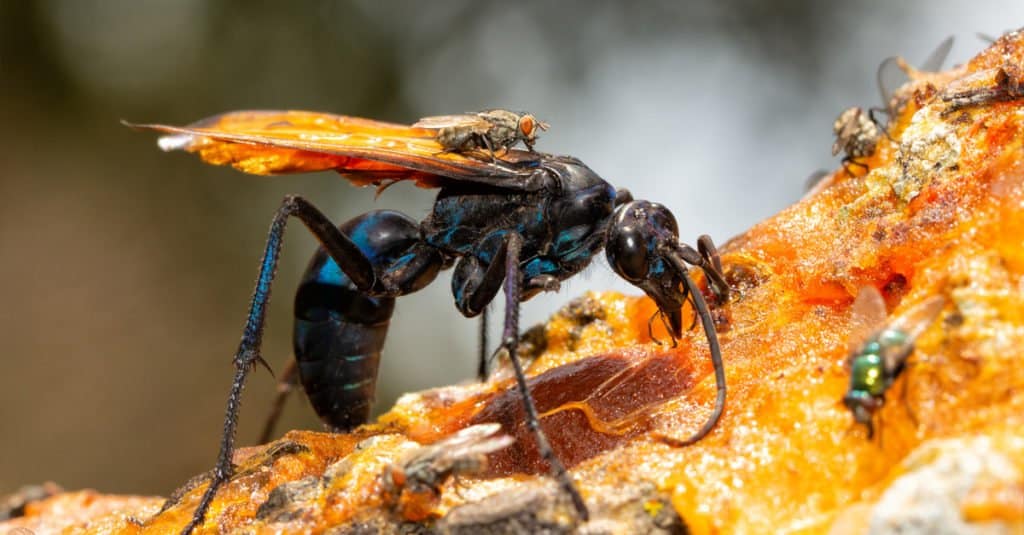Sample collection
A survey was conducted among the residents of nine counties in Kenya (Mombasa, Kisumu, Machakos, Nairobi, Makueni, Bomet, Kericho, Kiambu, and Narok) and GPS location coordinates were recorded and later used to build the predictive model (“Infestation dynamics of bedbugs in residential communities” section). These counties represent diversity in cultural practices, livelihood strategies (such as fishing, tourism, farming), and infrastructure development. Also, they comprise different altitudes above sea level, temperatures, and differing in average annual rainfall.
Samples identification using morphological identification keys
In each county where the survey was conducted, bedbug samples was taken and preserved in ethanol 70% for morphological identification. Cimex belonging to Cimicidae family is the common genus adapted to human environment and reported throughout the world and comprising species such as Cimex lectularius and C. hemipterus that are hematophagous mainly feeding on human blood5. The key morphological features used in identifying bedbugs include: (1) the head has a labrum that appears as a free sclerite at the extreme anterior margin, ecdysial lines form a broad V, eyes project from the sides composed of several facets and the antennae are 4-segmented, (2) thorax is subdivided into prothorax, mesothorax and metathorax, (3) legs have all other normal parts except pulvilli and arolia, tarsus is 3-segmented with 2 simple claws, (4) the abdomen has 11 more-or-less segmented recognizable segments, 7 pairs of spiracles borne on the second to eighth segments, hosts the genital structures, paramere in males and mesospermalege in females45. Bedbug specimen morphological features were examined using Leica EZ24 HD dissecting microscope (Leica Microsystems, UK) and photos documented using the associated software.
Survey for household’s knowledge and perceptions on bedbugs
This study was a community-based cross-sectional survey conducted from November–December 2020 with respect of the rules/guidlines introduced by the Ministry of Health to contain the COVID-19 pandemic in Kenya (wearing mask, social distance, washing hand, etc.). It was based on a stratified, systematic random sampling where 100 respondents were selected from each county.
A total number of 900 respondents were randomly selected and the household head or the representative showing willingness and consent was interviewed face-to-face. The interview was conducted using a semi-structured questionnaire prepared in the English language (Appendix A). The questionnaire was translated into the local native language (Kiswahili) to avoid biasness and improve the understanding between the enumerator and the respondent. Prior to the commencement of the survey and authentic data collection, a pre-testing exercise was performed by training enumerators on a similar socio-demographic pattern. This was useful for improving the quality of data, ensuring validity, familiarizing the enumerators with the questionnaire, and data handling.
The information collected using the semi-structured questionnaire included residents’ socio-economic profiles, knowledge, and perceptions on the pest, bedbug incidence, and management practices. The socio-economic profile factors addressed in the survey comprised gender, age, education, access to basic social amenities, and household size. The study also prioritized the financial consequences, the severity of the bites, perceptions of respondents on the pest, and management practices for its control.
Survey data were checked for errors, completeness, summarized, and entered in Microsoft-Excel. It was then cleaned and transferred to Statistical Package for Social Science (SPSS) version 25 software (IBM Corp., Armonk, NY) for purposes of descriptive statistics (means and percentages).
In contrast, in instances where more than one reason was given for a single question, percentages were calculated based on each group of similar responses. Chi-square was performed to determine the differences regarding socio-demographic characteristics, knowledge, and perceptions on bedbugs and control practices. Additionally, data were disaggregated by gender and age categories to understand the existing differences among the various respondent categories. Besides, F-test statistics was performed on the ages of respondents to determine the mean, standard deviation and statistical significance. The level of significance was considered when the p-value was below 5%.
Infestation dynamics model of bedbug
Model simulation assumptions
Houses infestation dynamics was studied following Susceptible-Infested-Treatment (SIT) model46. Therefore, houses in the community are classified into three groups: susceptible, infested or treated. Within a house, bedbug population dynamics was ignored, while it was considered from one house to another where infested houses have some potential to spread the infestation to other houses in the community. A population of bedbugs in an infested house has some probability per unit of time of becoming extinct either naturally or after treatment. In the infestation dynamics, the rate of house infestation depends on the number of infested houses, the movement of people from one house to another and the proportion of treated houses in the community. We assume that infested houses (I) spread the infestation at the rate β and only a fraction S/N of the houses is susceptible (S) to infestation. Infested houses become extinct at a certain rate known as rate γ. Infested houses are treated at the rate τ and the protection conferred is lost at the rate α. Ordinary differential equation developed to study SIT model were used in this study46. All the models used have the generic formulations displayed below:
$$frac{dS}{dt}=frac{beta }{N}SI+gamma I+alpha T$$
(1)
$$frac{dI}{dt}=frac{beta }{N}SI-(gamma +tau )I$$
(2)
$$frac{dT}{dt}=tau I-alpha T$$
(3)
where β > 0, τ > 0, α ≥ 0 and γ > 0. The total population size is N = S


/cloudfront-us-east-1.images.arcpublishing.com/gray/ZWDT36CPARE7RFW6EZRK5TUDJM.jpg)
:strip_exif(true):strip_icc(true):no_upscale(true):quality(65):fill(FFF)/cloudfront-us-east-1.images.arcpublishing.com/gmg/ZJSB7VGEKNC25GQLELJ4INN2WI.gif)

:quality(70)/d1hfln2sfez66z.cloudfront.net/03-22-2020/t_46015203ea0d46be83b2802243d079df_name_82E4943CFDC2407EADEC5C6A00190050.jpg)
:quality(70)/d1hfln2sfez66z.cloudfront.net/10-21-2022/t_9043eea4d59b4767a957144558642db2_name_file_960x540_1200_v3_1_.jpg)
